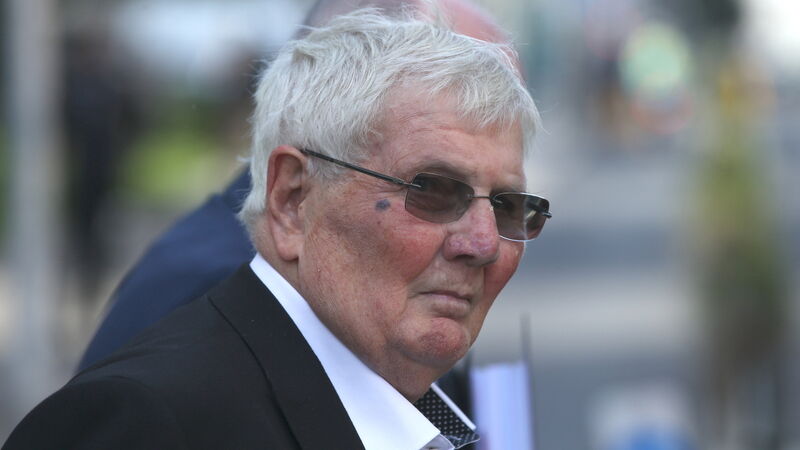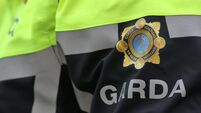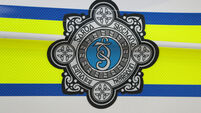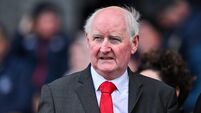Stardust manager Eamon Butterly says doors were not locked on night of fire

Former manager of the Stardust nightclub Eamon Butterly leaving the Stardust inquest on Thursday afternoon. Picture: Stephen Collins /Collins
The man who managed the Stardust nightclub where a devastating fire resulted in the deaths of 48 young people has claimed he never saw any of the emergency exit doors locked in the venue and that, if he had, “there would be trouble”.
Eamon Butterly took to the stand at the fresh Stardust inquests on Thursday before Dublin city coroner Dr Myra Cullinane, with the public gallery packed with families of victims waiting to hear his testimony.
The inquests have already heard evidence at length about policies in place at the north Dublin club, such as keeping emergency exits locked for certain portions of the night while patrons were inside, as well as the practice of draping chains to give the impression doors were locked.
As has been the process with earlier witnesses, the statements originally given by Mr Butterly to the gardaí in the aftermath of the fire in February 1981 were read to the court.
In an interview with gardaí in October 1981, many months after the fire, he was asked a range of questions about the practices of locking the doors at the Stardust and keeping chains draped over doors to make them appear as if they were locked.
He was asked if any consideration had been given to people who may have been fleeing the venue in an emergency such as a fire, when partially blinded by smoke, who then saw a lock and chain draped over the panic bars people would use at an emergency exit to get out.
Mr Butterly, at the time, said that in such a situation all a person had to do was push the bars, and they would open immediately. “There was a sign on all of them saying ‘push bar to open’,” he said.
In 1981, he said the policy of locking doors on disco nights was “forced upon [him]” by a “large number” of people getting in without paying, when friends already in the venue would open the emergency exits to let them in.
Mr Butterly told the gardaí he was told by the head doorman, the late Tom Kennan, that “all fire exits were unlocked” before midnight on the night of the fire.
The fresh inquests into the deaths of the 48 young people have been ongoing at the Dublin District Coroner’s Court in the Pillar Rooms of the Rotunda Hospital since April. The average age of the deceased was just 19-and-a-half.
With several of the doormen having faced a grilling from the counsel representing the various parties at the inquests so far, Thursday marked the first day of evidence from one of its most important witnesses.
Under questioning from counsel for the coroner, Gemma McLoughlin-Burke BL, Mr Butterly was asked what efforts he had made to ensure emergency exit doors were not locked while patrons were inside.
“I told [head doorman Tom Kennan] that the doors shouldn’t be locked,” he said. “I never saw the doors locked.”
Ms McLoughlin Burke put it to Mr Butterly he had previously told gardaí the policy was to keep some of the exit doors locked on disco nights until between 11.30pm and midnight.
“Until I found out and I told him to stop doing it,” he said.
Examples were also cited to Mr Butterly of witnesses saying doors had been discovered locked on certain evenings prior to the fire. He said he did not recall such instances being brought to his attention.
Ms McLoughlin-Burke asked: “How long was that policy in place? When did you start locking the doors when there were people on the premises?”
Mr Butterly replied that it “wasn’t a policy” but “something Tom Kennan told [him] that he was doing”, and that he asked for it to stop. He said he trusted Tom Kennan to follow through on this request.
It was put to him that many underage people were in the Stardust on the night of the fire, including 14 under the age of 18 who lost their lives. Mr Butterly said discos attracted a young crowd and doormen “didn’t ask them for identification like they have nowadays”. “That wasn’t around then,” he said.
He also claimed he had no role in hiring or firing staff, and that would be looked after by general manager Brian Peel or Mr Kennan, when it came to the doormen. He also said general issues would be reported primarily to Mr Peel.
When a statement from his father Patrick from 1981 was put to him that Eamon Butterly was the person in the Stardust who “called the shots”, he said this wasn’t the case and his father called the shots.
Mr Butterly said no staff member was given fire safety training and that Mr Peel was the man to “look after that type of thing”.
“Who was responsible for fire safety training?” Ms McLoughlin-Burke asked him, to which he responded “nobody”. She also asked why no such training was given and he said “we didn’t know anything about it”.
He said in the event of an emergency like a fire, the doormen would be responsible for trying to ensure people got out.
“They were responsible, but they had no fire safety training?” the coroner’s counsel asked. “No,” replied Mr Butterly.
He was also quizzed by coroner’s counsel Mark Tottenham BL about the conversion of the building in the late-1970s into the premises that included the Stardust and the adjoining Silver Swan bar and Lantern Rooms function rooms.
He said if directed to do so by Dublin Corporation on a matter related to the design and fittings of the premises, he would have done so. He said if the corporation was satisfied by, for example, the carpet tiles fitted on the walls of the Stardust, then he was satisfied too. He also said he was unaware the polyurethane foam used in the seats of the venue were flammable.
His evidence continues on Friday, when counsel for the families will be given an opportunity to ask Mr Butterly questions before the 13-person jury.













